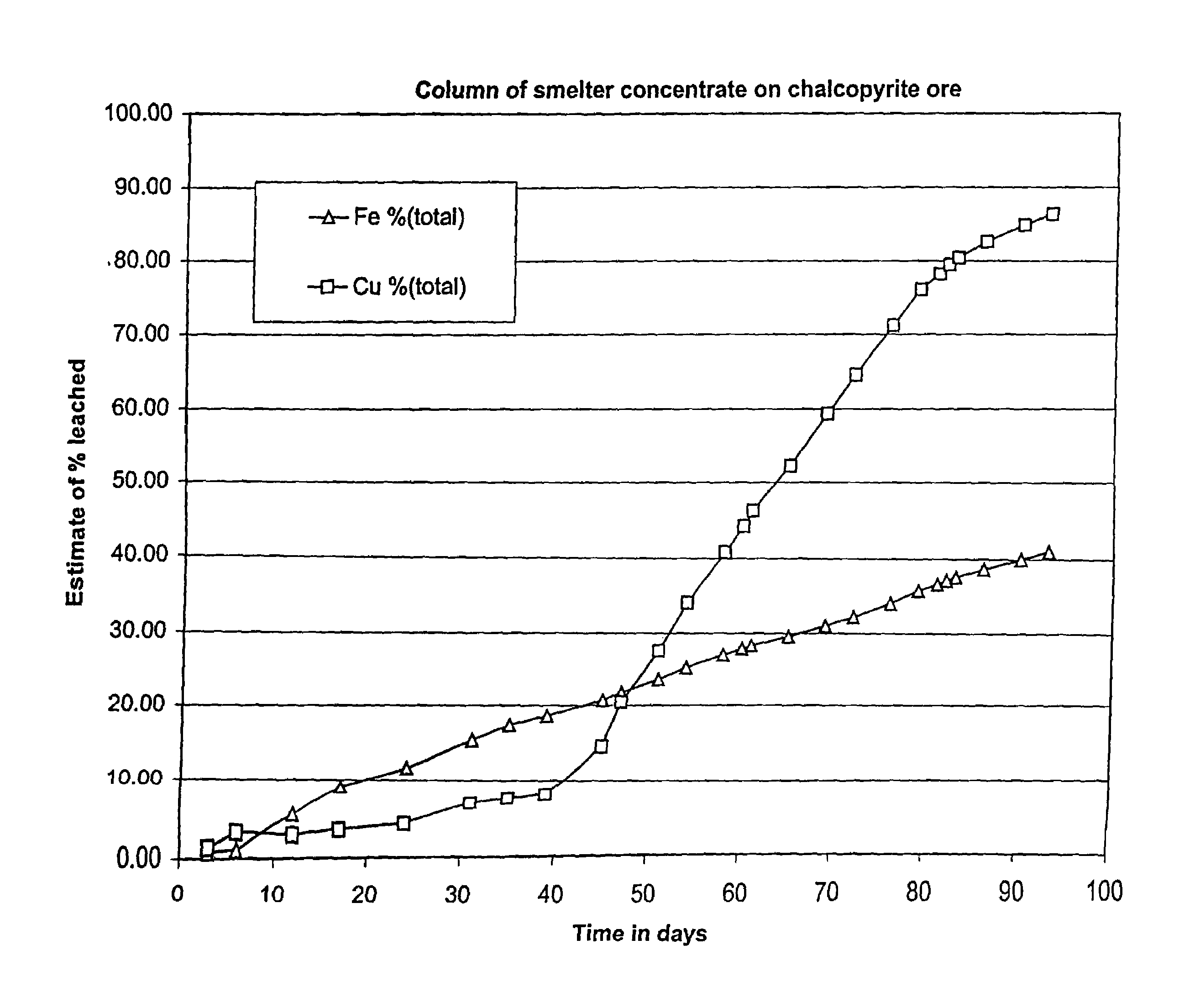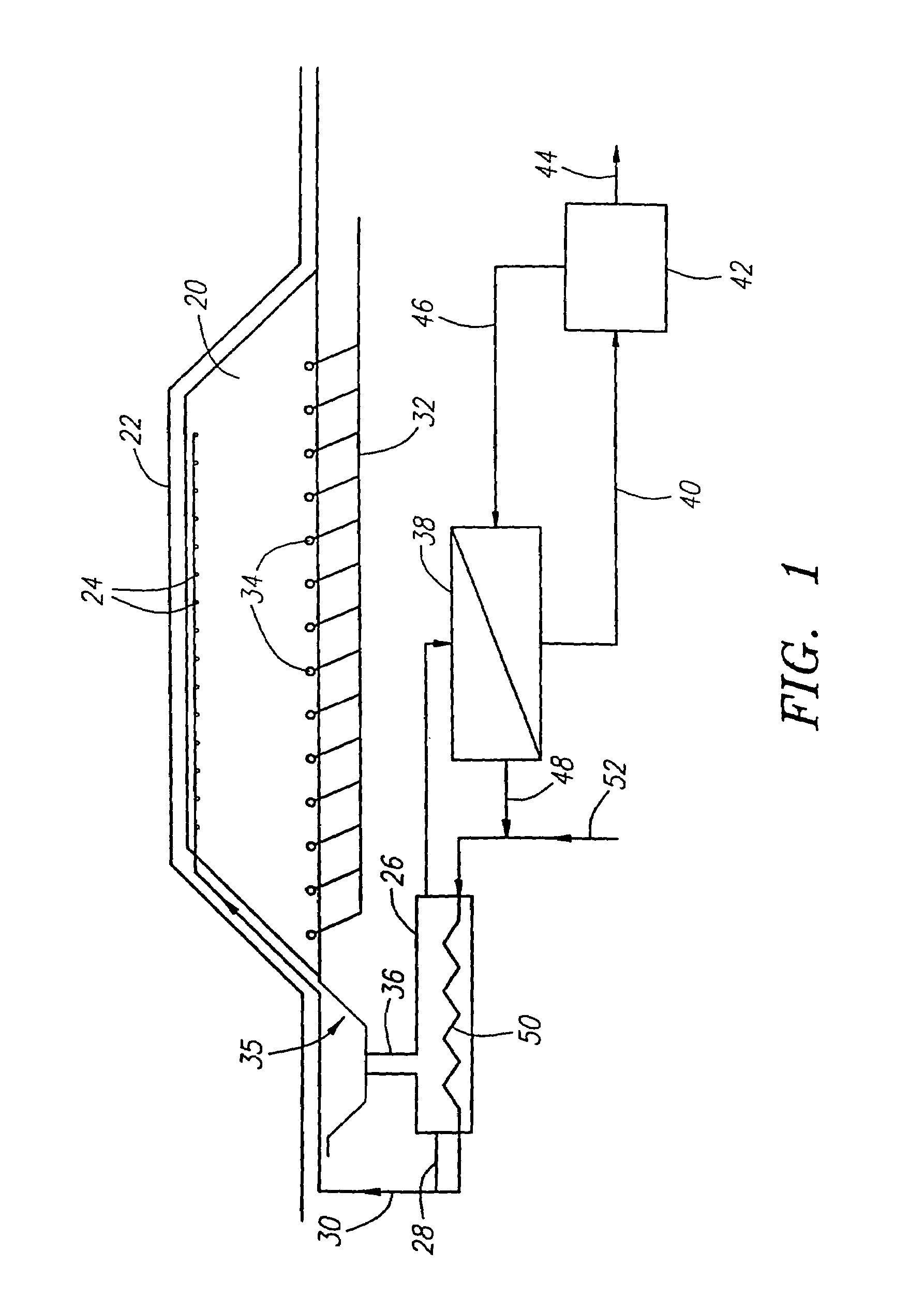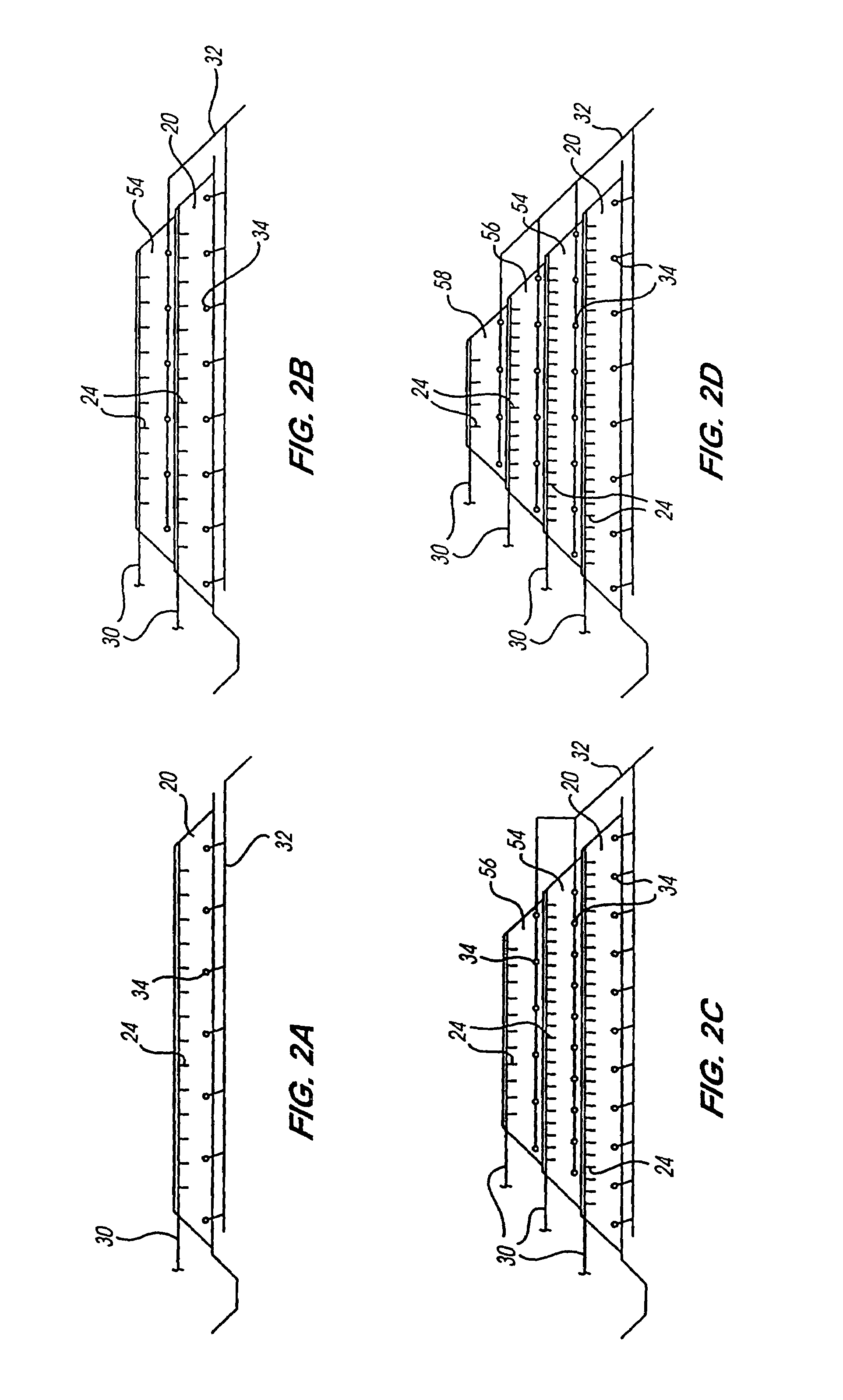High temperature heap bioleaching process
a bioleaching and high temperature technology, applied in the field of high temperature heap bioleaching process, can solve the problems of large sulfuric acid production, environmental unacceptable sulfur dioxide gas emissions, and commercially viable hydrometallurgical process
- Summary
- Abstract
- Description
- Claims
- Application Information
AI Technical Summary
Benefits of technology
Problems solved by technology
Method used
Image
Examples
example 1
[0096]Samples of recalcitrant chalcopyrite ore and concentrate from the San Manuel Copper Mine in Arizona were used to evaluate the use of thermophilic microorganisms to bioleach chalcopyrite in a heap process. In order to simulate the heap leaching process, a column test was performed. A total of 491.2 g of smelter feed chalcopyrite concentrate were coated onto 5 Kg of ore from the same San Manuel Mine. Because the concentrate was smelter grade, the sulfide mineral particles within the concentrate were comprised almost entirely of chalcopyrite. Analysis of the smelter concentrate showed that it contained 28.5% copper and 27.5% iron and 33.6% sulfur as sulfide. Thus, without considering the exposed sulfide minerals in the coarse ore support, the concentrate coated ore contained at least 3% exposed sulfide sulfur.
[0097]The support rock that the concentrate was coated onto was prepared by size separation of crushed San Manuel ore. The minus 19 mm crushed ore was separated into a minus...
example 2
[0107]The experiment described in Example 1 was repeated using 486.8 g of the same smelter grade concentrate that was used in that experiment. The support rock that the concentrate was coated onto comprised 2.5 Kg of 3.2 mm to 6.4 mm ore and 2.5 Kg of 6.4 mm to 12.7 mm ore. The mixture of the two sizes of chalcopyrite ore was coated with the high-grade concentrate by rolling the ore in a drum at about 3 rpm, while spraying with water. Water was used in this experiment to show that acid could be added later. The dry concentrate was spread over the wetted tumbling plurality of substrate ore as was done is Example 1. The final water content of the coated coarse ore particles was approximately 3% by weight. Furthermore, as with Example 1, without considering the exposed sulfide minerals in the coarse support, the concentrate coated ore contained approximately 3% exposed sulfide sulfur.
[0108]The concentrate coated substrates were placed into an 8.0 cm glass column. The column was wrapped...
example 3
[0114]A sample of chalcopyrite concentrate from the San Manuel copper mine in Arizona was used to perform a 35° C. control experiment in a similar column test. A total of 391.8 g of smelter grade concentrate containing 28.8% copper and 27.3% iron was coated on to a plurality of granite support rocks. The 3920 g of support rock that was coated had no copper mineral in it and was between 6.4 and 12.7 mm in size. The sample of granite support rock had a small amount of carbonate and tended to cause some precipitation of iron. The method of coating was similar to the method used in Examples 1 and 2 with the exception that about 110 ml of bacteria containing solution were used to wet the support rock before applying the dry concentrate.
[0115]As the concentrate contained over 30% sulfide sulfur, the concentrated coated support rock contained approximately 3% exposed sulfide sulfur.
[0116]The mixture of concentrate and coarse granite support rock were placed in a 7.6-cm plastic column. The ...
PUM
| Property | Measurement | Unit |
|---|---|---|
| temperature | aaaaa | aaaaa |
| temperature | aaaaa | aaaaa |
| temperature | aaaaa | aaaaa |
Abstract
Description
Claims
Application Information
 Login to View More
Login to View More - R&D
- Intellectual Property
- Life Sciences
- Materials
- Tech Scout
- Unparalleled Data Quality
- Higher Quality Content
- 60% Fewer Hallucinations
Browse by: Latest US Patents, China's latest patents, Technical Efficacy Thesaurus, Application Domain, Technology Topic, Popular Technical Reports.
© 2025 PatSnap. All rights reserved.Legal|Privacy policy|Modern Slavery Act Transparency Statement|Sitemap|About US| Contact US: help@patsnap.com



